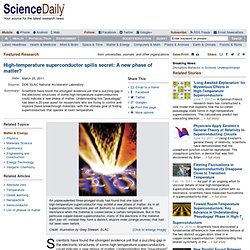

Cool roofs under scrutiny. Rooftops in Phoenix, Ariz.

[Image credit: DigitalGlobe, GeoEye, U.S. Geological Survey, USDA Farm Service Agency via Google] For anyone who has spent nine straight days in heat above 110 degrees, as the residents of Phoenix did this August, it’s easy to recognize the appeal of “cool roofs.” Like dressing a building in a white T-shirt, these reflective roofs offer relief for city-dwellers baking in a habitat of concrete and asphalt. But a new study indicates that in certain regions, cool roofs may have the unintended consequence of reducing rainfall. “We need to start looking at the impact of cool roofs on the entire climate system, not just temperature,” said climatologist Matei Georgescu, whose paper was recently published in Environmental Research Letters. Cool roofs are painted white or covered with reflective materials, instead of dark asphalt.
When it comes to disrupting rainfall, the larger culprit in the ASU study is urbanization itself. How E-Bombs Work" The United States most likely has EMP weapons in its arsenal, but it's not clear in what form.

Much of the United States' EMP research has involved high power microwaves (HPMs). Reporters have widely speculated that they do exist and that such weapons could be used in a war with Iraq. Most likely, the United States' HPM e-bombs aren't really bombs at all. They're probably more like super powerful microwave ovens that can generate a concentrated beam of microwave energy. One possibility is the HPM device would be mounted to a cruise missile, disrupting ground targets from above. This technology is advanced and expensive and so would be inaccessible to military forces without considerable resources. In late September 2001, Popular Mechanics published an article outlining this possibility.
The bomb consists of a metal cylinder (called the armature), which is surrounded by a coil of wire (the stator winding). Here's the sequence of events when the bomb goes off: Very high temperature reactor. Very-high-temperature reactor scheme.

The very-high-temperature reactor (VHTR), or high-temperature gas-cooled reactor (HTGR), is a Generation IV reactor concept that uses a graphite-moderated nuclear reactor with a once-through uranium fuel cycle. The VHTR is a type of high-temperature reactor (HTR) that can conceptually have an outlet temperature of 1000 °C. The reactor core can be either a "prismatic block" or a "pebble-bed" core. The high temperatures enable applications such as process heat or hydrogen production via the thermochemical sulfur–iodine cycle. Overview[edit] AVR in Germany. The VHTR is a type of high-temperature reactor that conceptually can reach higher outlet temperatures (up to 1000 °C); however, in practice the term "VHTR" is usually thought of as a gas-cooled reactor, and commonly used interchangeably with "HTGR" (high-temperature gas-cooled reactor).
The Russian VHTR is also a HTGR. History[edit] Nuclear reactor design[edit] Neutron moderator[edit] Nuclear fuel[edit] High-temperature superconductor spills secret: A new phase of matter? Scientists have found the strongest evidence yet that a puzzling gap in the electronic structures of some high-temperature superconductors could indicate a new phase of matter.

Understanding this "pseudogap" has been a 20-year quest for researchers who are trying to control and improve these breakthrough materials, with the ultimate goal of finding superconductors that operate at room temperature. "Our findings point to management and control of this other phase as the correct path toward optimizing these novel superconductors for energy applications, as well as searching for new superconductors," said Zhi-Xun Shen of the Stanford Institute for Materials and Energy Science (SIMES), a joint institute of the Department of Energy's SLAC National Accelerator Laboratory and Stanford University. Shen led the team of researchers that made the discovery; their findings appear in the March 25 issue of Science. The electrons in the pseudogap state aren't superconducting -- so what are they doing? ENERGIES.